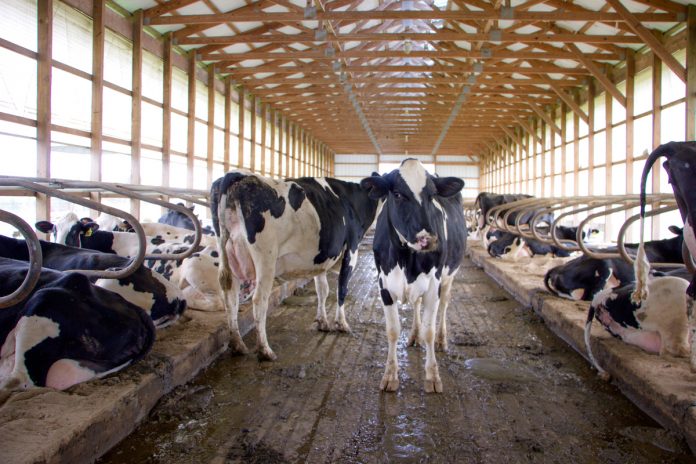
Remodeling existing facilities to improve cow comfort can improve the longevity and production of your herd. When planning improvements, you will want to take into consideration free stall size, bedding material, water availability, lighting, floor grooving and fan placement.
If an expansion is in your future, many of the same decisions will apply, along with alley widths, the distance between crossovers and the alley cleaning system.
Construction costs
All of these building projects will be affected by the availability and price of construction materials. Inflation and rising interest rates are beginning to influence the construction industry with fewer new construction projects being booked.
In October, architecture billing rates dropped below 50, which is considered the required amount for construction to remain fully booked. Construction will remain busy through 2023 with a 9- to 12-month lag between a decrease in architecture billing hours and construction projects.
Over the past year, construction has seen a 3.3% increase in total needed employees, but the industry is struggling to attract enough employees, causing delays in construction project completion.
Concrete costs have risen 14% over the last year and are expected to stay at these levels through most of 2023 with tight supplies of both cement and sand.
Copper prices are also remaining 44% higher than a year ago. A few materials have come down, including steel which is 12% lower than last quarter but still 200% higher than 2018 prices.
Lumber has also seen a 9% decline from quarter three to quarter four of 2022 and is still about 110% higher than in 2018.
Construction companies are expected to remain at full capacity through most of 2023, and building costs are not expected to decrease until late into 2023.
Stall considerations
When installing new free stalls, they should be sized to match the largest 25% of cows in the group. Compromises do occasionally have to be made if your groups have a high percentage of first lactation cows in the group, especially if there is intolerance for manure on the back of stalls.
Mature holsteins need 3 to 4 feet of open space in front of the stall for cows to lunge or they will lay at a diagonal in your stalls, leaving manure in the corners instead of the alley.
Stalls that are against a wall should be 10 feet from the back of the stall to the wall while head-to-head stall platforms should be a total of 18 feet. Even in head-to-head stalls, when they are too close together, cows lunge to the side — especially timid cows who are socially intimidated by a dominant cow.
One-thousand-pound cows should have stalls that are 42 inches on center with 64 inches from the curb to the brisket locator and 58 inches from the curb to the neck rail.
While the average 1,600-pound holstein needs a stall that is 50 inches on center with 70 inches from the curb to the brisket locator and 64 inches from the curb to the neck rail.
Water availability
Water availability is another critical component. Cows consume 30-60% of their water needs shortly after milking, so water needs located close to the parlor or robot exits and throughout the barn.
The stand-by has been 2 inches of assessable water trough perimeter per cow but recent research has shown this needs to be 3 to 5 inches per cow, especially in the summer during heat stress periods.
Each group of cows should have at least two waters so that more timid cows can access water when a dominant cow is controlling them.
Barn crossovers and alleys with water or feed should be 14 feet wide so that eating and drinking cows are not disrupted by cows walking by.
Ventilation
Assessing barn ventilation is critical during the building process also. Stalls should have an airspeed of 200-400 feet per minute at the cow lying height, about two and a half feet off the stall surface.
Air speeds over 400 feet per minute provide little additional heat abatement benefits. A 48-inch fan used to be used to cover 40 feet, but newer research shows that when these fans are pointed correctly for cooling while cows are lying down, they need to be closer at 24 feet apart or 5 times the blade diameter.
It takes about 20 feet for air to reach the cow’s back from the fan, so fans that are 40 feet apart are really covering 60 feet with a 20-foot dead zone.
Good luck with your construction projects this year.












